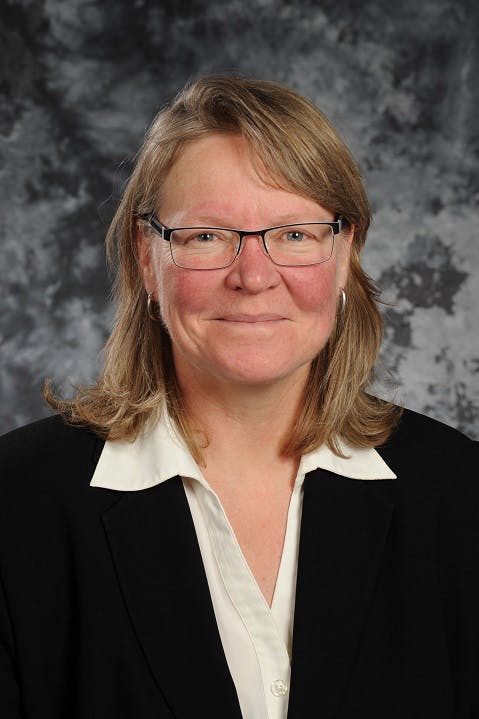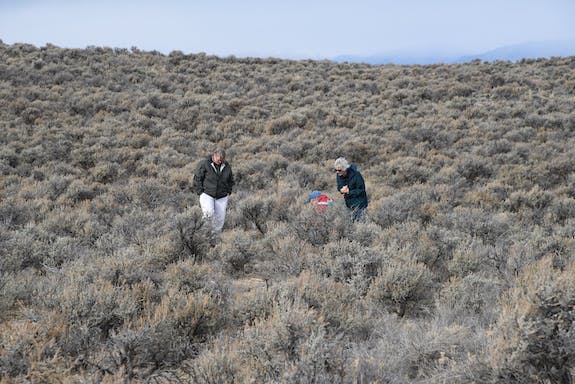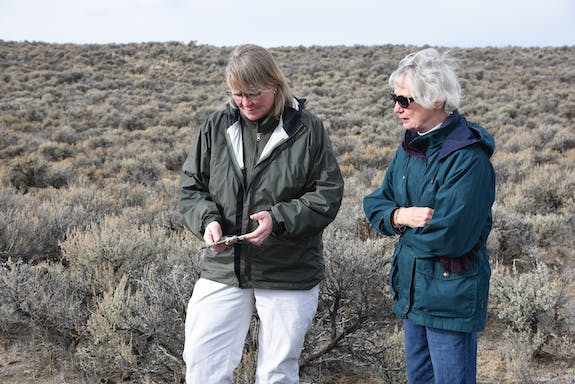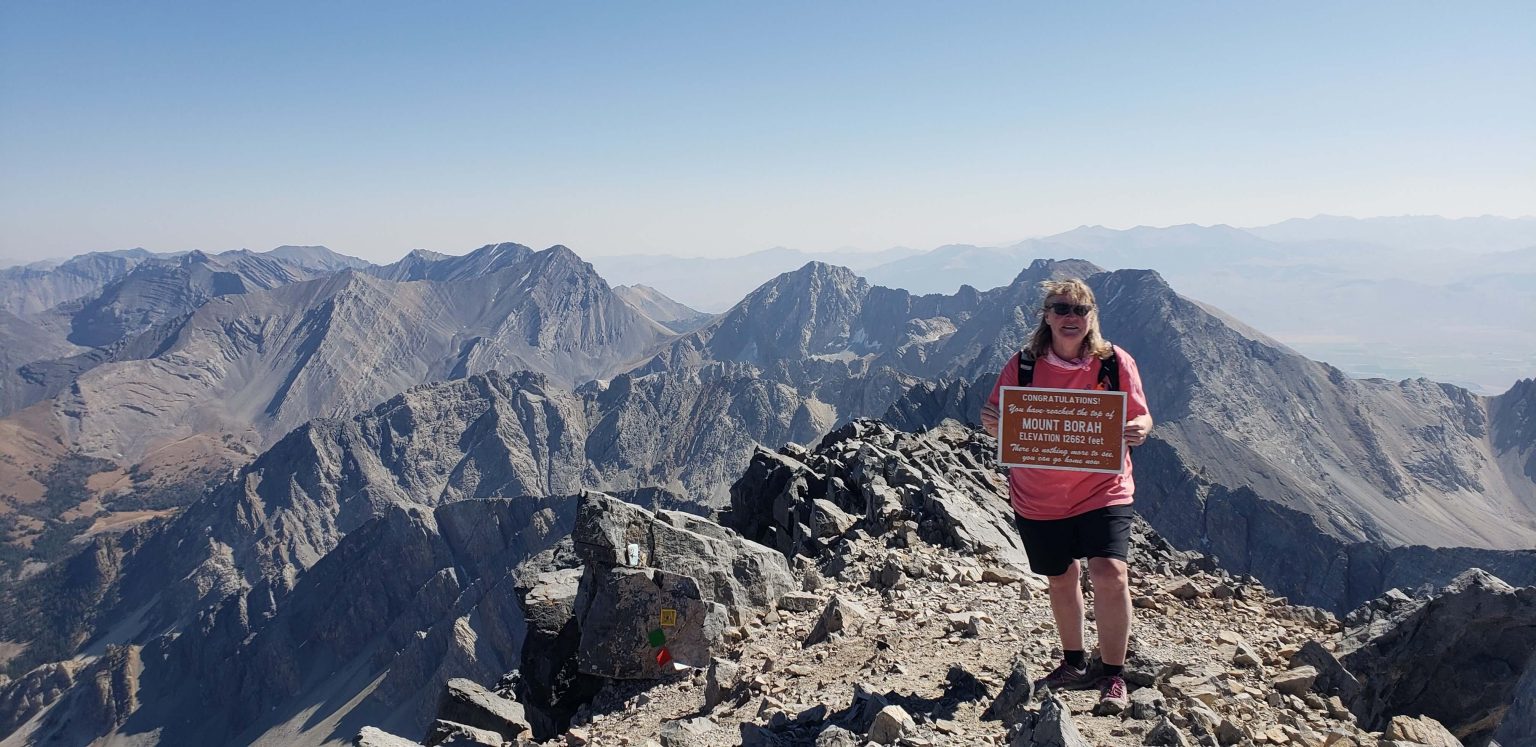“Peripatetic” is the ten-cent word used to describe a person who travels from place to place. Although plenty of people have followed interesting career paths through Idaho National Laboratory, few are likely to match the peripatetic breadth and variety of Hollie Gilbert’s.
“I’ve been down pretty much every trail out there,” she said. “I’ve worked at just about every facility, even the ones that don’t exist anymore.”
As a teenager, Gilbert started as a dishwasher in the Naval Reactors Facility cafeteria. Her father, Norman Gilbert, worked for the vending machine company that supplied NRF. This was how Gilbert, a student at Bonneville High School, got wind of the job opportunity. As modest as the position was, it got one hurdle out of the way quickly.
“It opened doors, for sure,” she said.

Two years later, as the lab underwent a big security upgrade, Gilbert applied for a guard job with American Protective Services, the contractor at the time. “They were hiring guards left and right,” she said. Women on the security force were scarce, and she was the only female in a class of 20. There was no overt harassment, but one supervisor told her in confidence he didn’t think women had any business being on the force.
These were changing times for the lab. Longtime test projects like the Power Burst Facility (PBF) and Loss of Fluid Test Facility (LOFT) had done their work and were being shut down. Gilbert was part of an INL group sent to Brookhaven National Laboratory in New York to help implement a security upgrade. After three years in security, she applied for a day-shift job in Idaho Falls that would allow her to take college classes in the evening.
She joined INL seismologist Suzette Payne’s Seismic Monitoring Office.
In fact, if there has been a common thread to most of the jobs Gilbert has had, it is that they have involved a lot of work outdoors. Her father was an avid outdoorsman, and most of their weekends together involved hiking or fishing.
“I feel fortunate to have had a lot of jobs that have required working outside,” she said.
The passion has carried over into adulthood. Gilbert is active in two outdoor groups, iHike and Girls on Top, both of which have Facebook pages. Last summer she went on an 85-mile iHike trip in Wyoming’s Wind River Range, part of the group’s effort to hike the entire Continental Divide in sections. Two weeks after finishing that, she was part of a group that made it up Mount Borah, the highest peak in Idaho.
As for Girls on Top, a group she helped organize, “Men are welcome, too,” she said.

One of the responsibilities for the seismic office was to evaluate the risk to INL facilities from earthquakes and volcanic activity and to help with the design criteria for new and existing facilities. While seismic monitors detect large, abrupt changes, scientists can study smaller and slower events in the crust with GPS, including “silent” earthquakes, which can last several hours or days.
With equipment spread out over an area that stretched from Challis to Soda Springs, the office had two people out every day checking stations and sensors. These are vulnerable to harsh weather and damage from animals – anything from rodents chewing through wires to elk rubbing velvet off their antlers.
“It was one of my favorite jobs I’ve ever had,” Gilbert said. But her desire for variety led her to apply for a position on a team that was sent to Tinker Air Force Base in Oklahoma. As a technician for a pilot plant treating organics in wastewater contaminated by jet engines, what she remembers most about the job is the oppressive heat and humidity.
In 1995, Gilbert took a voluntary separation from the lab so she could finish her degree, a bachelor’s in history, and start pursuing a master’s in historical archaeology. The pull of work, however, led her the next year to join the team at Argonne National Laboratory-West as a graphic artist and photographer. In 1999 she jumped to work in environmental management, sampling groundwater. “I was outside in the field every day,” she said.
Her most interesting and rewarding times came after she was absorbed into the Cultural Resource Management Office. Due to federal and state laws and regulations, DOE policies, and legal agreements between DOE and the Shoshone-Bannock Tribes, INL is required to provide cultural resource surveying and assessments for any projects or land use planning that take place.
The work took her across lava beds and into caves – “I’ve seen far more snakes than I ever cared to,” she said – but her most interesting and personal assignment came from left field.
In early 2014, the office was contacted by Marc McDonald of Project Remembrance, asking about a B-24 Liberator bomber crash in January 1944 near the West Twin Butte. Using GPS and satellite imagery technology, three possible sites were identified. The first two yielded no results, but at the third they found the wreckage of the bomber, undisturbed since the Army had collected the crewmen’s remains and cleared away major parts of the wreckage. The big find of the day came when Gilbert picked up a 1935 high school class ring with the letters WHHHS and the initials M.A.H. inside.

Sifting through records, they discovered that one of the crash victims, Sgt. George H. Pearce Jr., had been married to Madeline A. Hopkins, and that both had graduated from William H. Hall High School in West Hartford, Connecticut.
Pearce’s daughter, Nancy Gavalis, 74, of Bristol, New Hampshire, said she was interested in visiting the crash site, where her father had died when she was only 2 years old. In early November 2015, Gilbert and her colleagues escorted Gavalis and her husband to the site, which had been picked to represent Idaho in the federally sponsored “Making Archaeology Public” project.

The day will always have special meaning to her, Gilbert said. “With the prehistoric sites, you’ll find some arrowheads or pieces of pottery, but this tells a story of the past connected to the present.”
Peripatetic that she is, Gilbert has since left the Cultural Resource Office and taken a job with the Radiological Security Source Disposition team. All over the United States, radioactive sources are used in cancer therapy, disease control, nondestructive examination of industrial components, or to kill germs and insects. When facilities have excess, unwanted, abandoned or orphaned sources, INL’s team aids in their recovery and disposal.
At this point in her career, Gilbert figures she’ll stay put. Having been down so many different roads, “I’m hoping this is the final fork I take,” she said. “I want this job to take me to retirement.”







